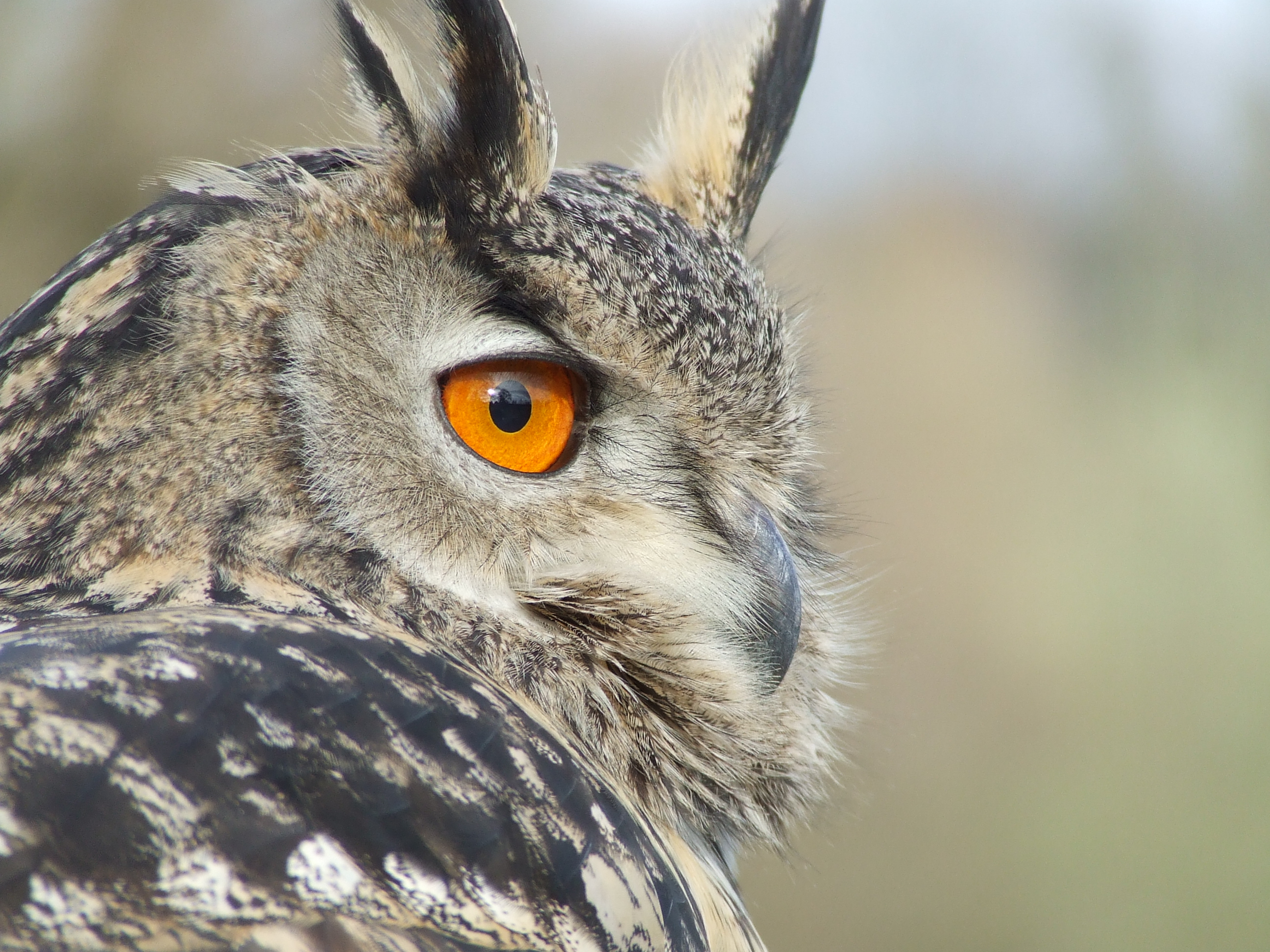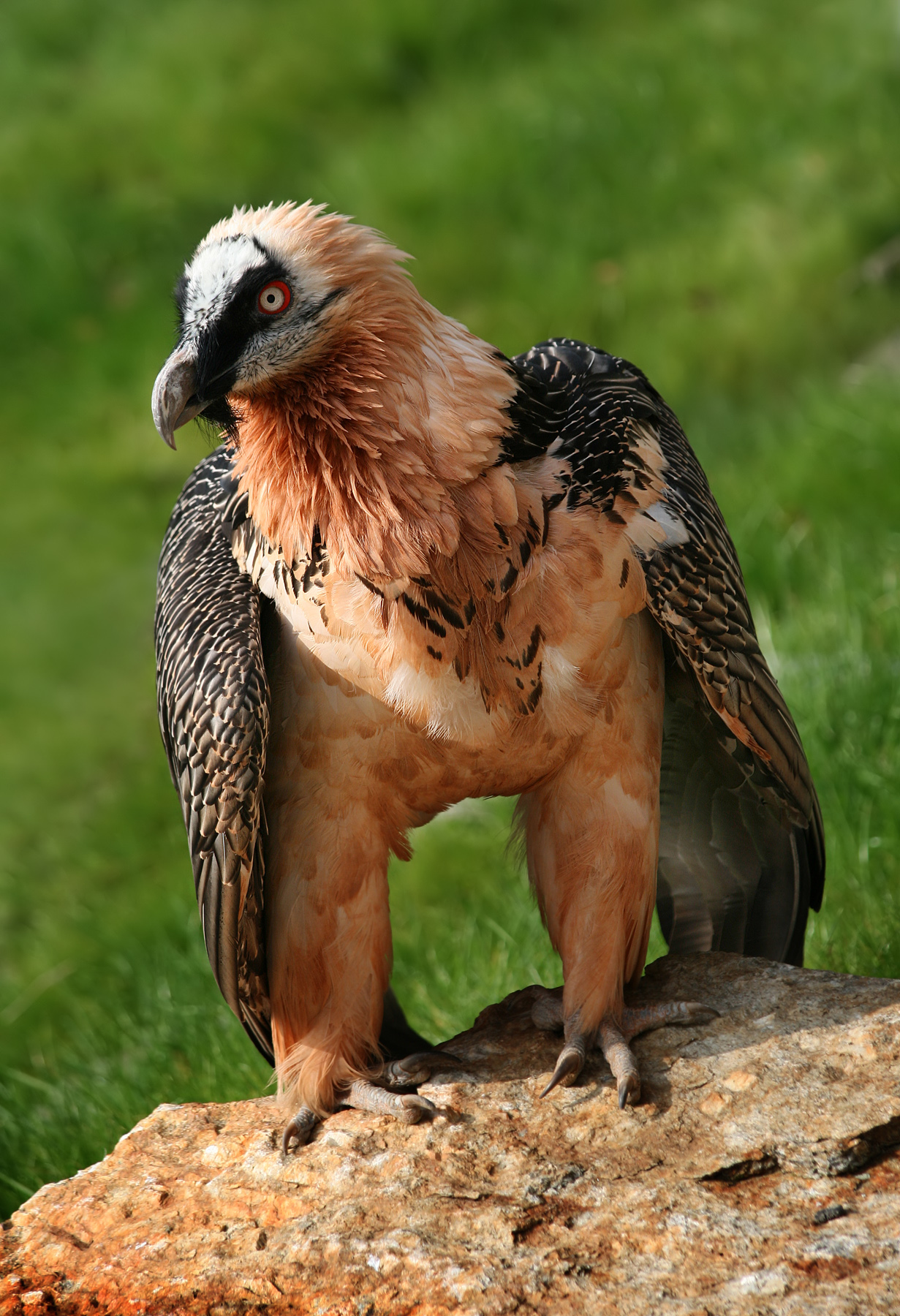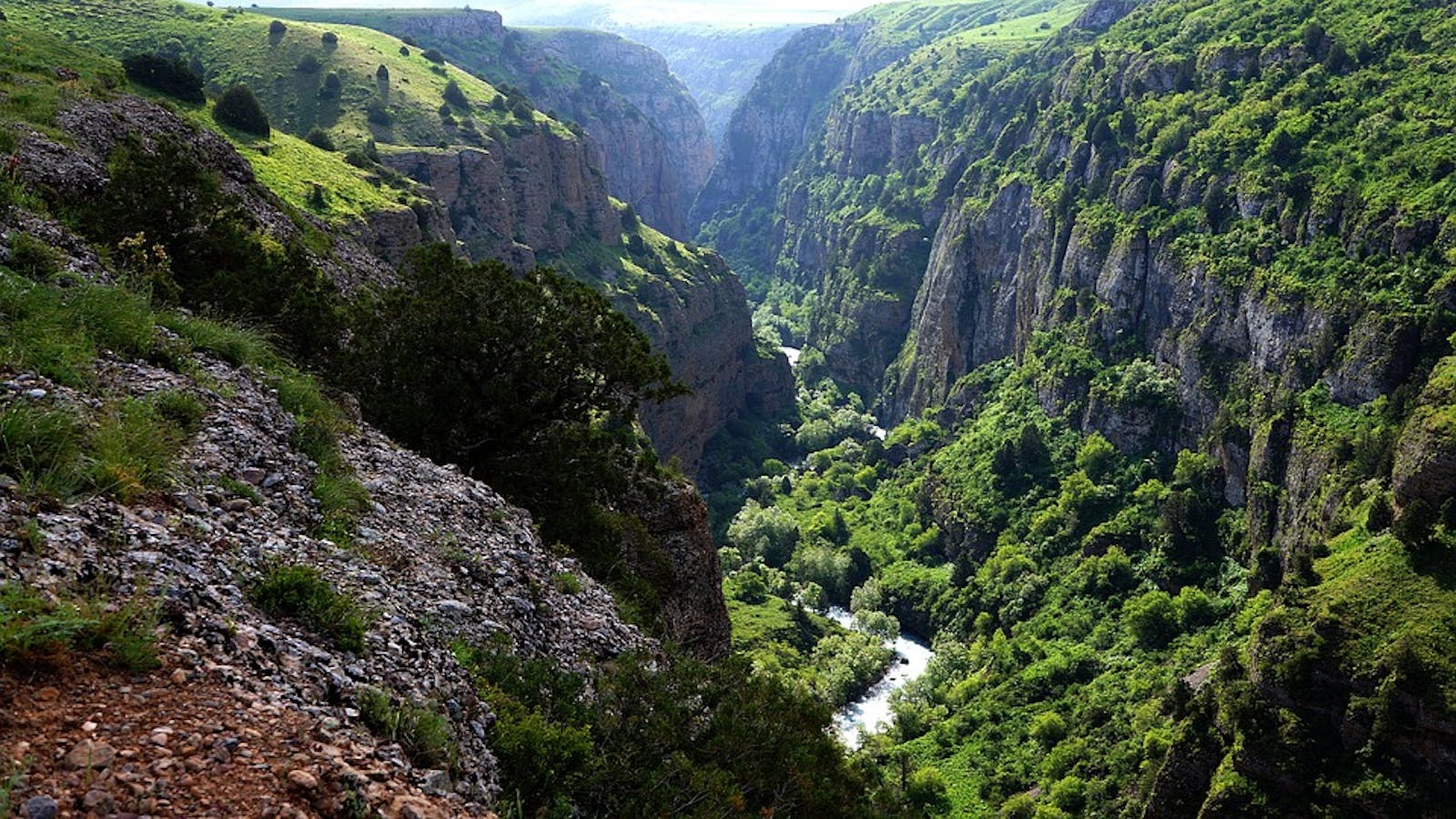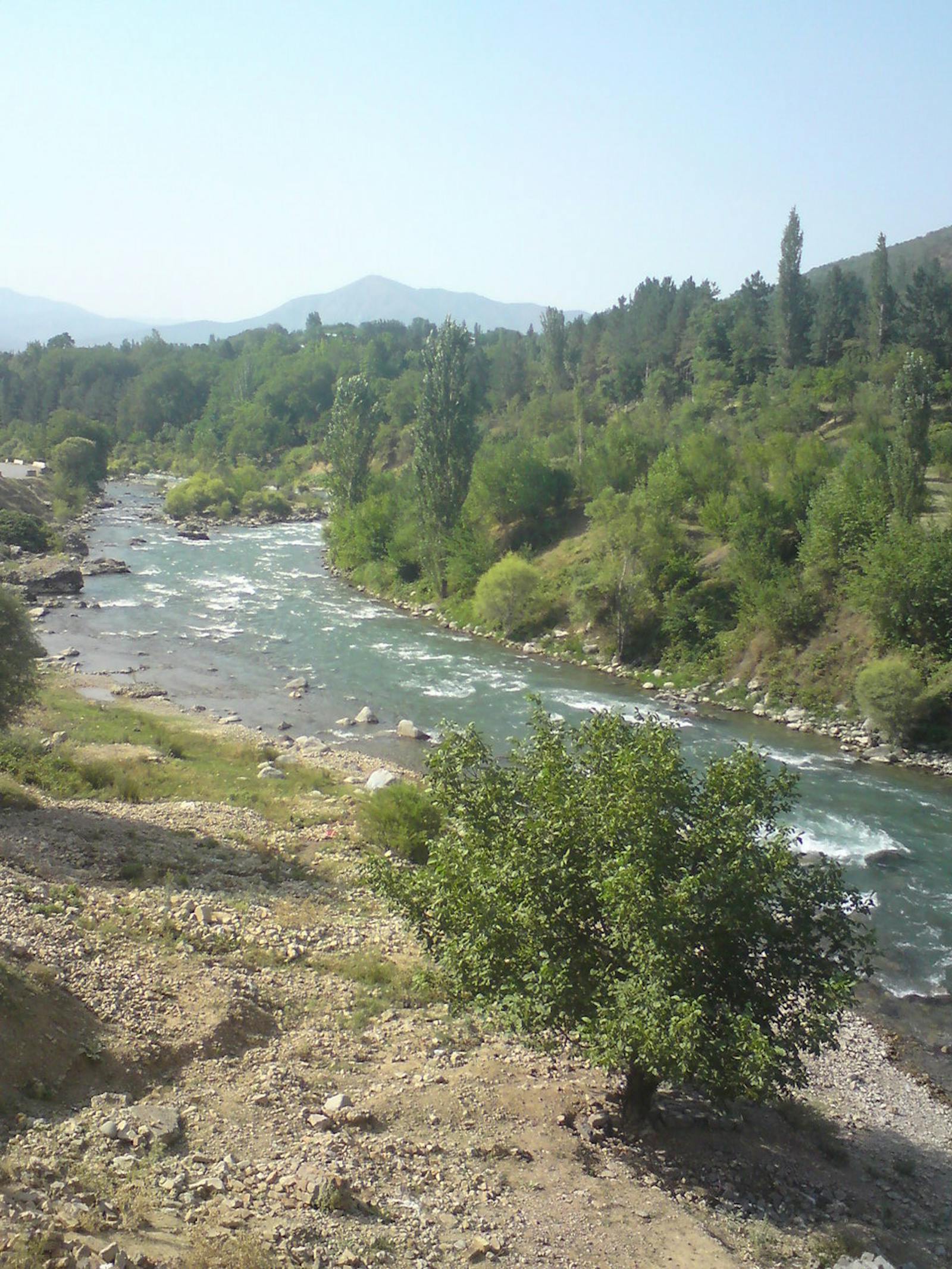Gissaro-Alai Open Woodlands
The ecoregion’s land area is provided in units of 1,000 hectares. The conservation target is the Global Safety Net (GSN1) area for the given ecoregion. The protection level indicates the percentage of the GSN goal that is currently protected on a scale of 0-10. N/A means data is not available at this time.
Bioregion: Tian Shan-Pamir Grasslands, Mountain Steppe & Conifer Forests (PA31)
Realm: Central Eurasia
Ecoregion Size (1000 ha):
16,840
Ecoregion ID:
730
Conservation Target:
20%
Protection Level:
4
States: Tajikistan, Kyrgyzstan, Uzbekistan, Kazakhstan, Afghanistan
In spring, vast numbers of red tulips bloom and cover the landscape. For the majority of the year however, the open woodlands consist of juniper and ephemeroid herb vegetation. Found among the open sparse grass and bushes are the critically endangered Tadjikistan even-fingered gecko, which is endemic to the Fergana Valley in Kyrgystan. Other endangered species, such as the heavily hunted Tien Shan Argali, finds a safe port in the country’s oldest nature reserve, the Aksu-Zhabagly, in the southern Kazakstan region.
The flagship species for the Gissaro-Alai Open Woodlands ecoregion is the Tadjikistan even-fingered gecko.
This ecoregion intersects five countries: Afghanistan, Kazakhstan, Kyrgyzstan, Tajikistan, and Uzbekistan. It stretches from the southeastern Uzbekistan mountain range region of Baysun, continuing west to the Gissar (or Hissor)-Alai mountain range, through Tajikistan's "Districts of the republican Subordination" and then northward to the Batken region. It continues towards the Osh region in the Fergana valley in Kyrgyzstan and northward to the Western Tien-Shan highland woods. The vegetation in this ecoregion consists of coniferous evergreen Juniper species and ephemeroid herb vegetation, with unique fruit and nut forests. During springtime, colourful red tulips bloom. The average annual temperature is 8.7°C, with the average maximum at 39.3°C and an average minimum of -10.7°C. The mean annual precipitation in this region is of 599.3 mm/year.

Eurasian eagle-owl. Image credit: Creative Commons
There are three critically endangered species in this ecoregion: Tadjikistan even-fingered gecko, Saiga antelope, and sociable lapwing. The gecko is endemic to the valley of Vakhsh River, southwest Tajikistan, and suffers intense pressure due to active agriculture and human population density in this region. It can be found mainly along clay slopes with scattered rocks, sparse bushes and grass, and inside rodent burrows.
It might be possible that the Saiga is present in this ecoregion as its Betpak-Dala population intersects the ecoregion in South Kazakhstan. This population suffered a massive decline due to disease and poaching. The sociable lapwing is likely to occur in this ecoregion during short periods during migration. Historically, it has been heavily hunted. In the endangered category are steppe eagle, Saker falcon, Egyptian vulture, and white-headed duck. The vulnerable snow leopard has several populations intersecting this ecoregion, but they have been severely hunted and its fur illegally traded.
__CC-2012.JPG)
Indian crested porcupine. Image credit: Creative Commons
Most of the ecoregion, 75.2 %, is covered by herbaceous vegetation, while some 12.2 % is used as cropland. The natural vegetation, however, is fragmented, with approximately 40% still as a core area. There are several protected areas in this ecoregion including some category Ia national parks. For example, in Kazakhstan, the Aksu-Zhabagly State Nature Reserve is located in the western Talasskiy Alatau mountains, on the west Tien Shan mountain range.
It also borders Kyrgystan and Uzbekistan. It’s the country's oldest protected area, designated in 1926. It harbours more than a 1,000 vascular plant species, including 44 that are listed as endangered in the red book of Kazakstan, such as the native wild apple, a wild grape, and several wild Tulips. A mosaic of open juniper forests forms the montane belt. Habitats can be found here for the snow leopard. Also present is the Tien Shan argali, a subspecies of the Argali which is protected here. Other regional subspecies here are the Turkestan lynx and Tian Shan brown bear. Human population density is low with an average of 0.5 inhabitants per hectare.

Bearded vulture. Image credit: Richard Bartz, Creative Common
Logging and agro-industry are significant threats in some of the regions like the Tigrovaya Balka Nature Reserve area. Although human population density is low, livestock farming and ranching are also major threats, especially for birds in the Kayrakkum Reservoir, Aktash massif, and Mogoltau massif Important Bird Areas. Dams and poor water management for agricultural use also threaten natural ecosystem processes in some areas. Poaching and trade of fur and horns are another significant threat, especially of the argali and snow leopard.
The priority actions for the next decade will be to: 1) continue to improve cross-border collaboration towards combatting the illegal trade of saiga horns and snow leopard furs; 2) enhance regulation of logging and water resource use, especially in and around protected areas; and 3) support the creation of transboundary protected areas to increase management effectiveness and proper use of human and material resources.
Citations
- Milner‐Gulland, E.J. and Singh, N.J. 2016. Two Decades of Saiga Antelope Research: What have we Learnt?. Antelope Conservation: From Diagnosis to Action. (16), p.297.
- Maheshwari, A. and S. K. Niraj. 2016. Conservation and Adaptation in Asia's High Mountain Landscapes and Communities: Melting the Snow: Monitoring Illegal Trade in Snow Leopards TRAFFIC, India Office/WWF-India. New Delhi, India.
- Kovshar, A.F. 2016. Aksu-Zhabagly Nature Reserve’s 90 - Anniversary. Nature Conservation Research. 1(1), pp. 111-118.


.png?auto=compress%2Cformat&w=300)

